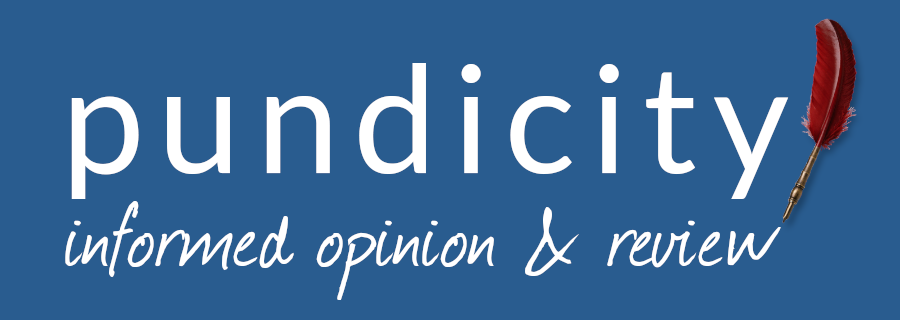President Trump is now seeing Vladimir Putin through clearer eyes. I suspect Melania deserves much of the credit.
As Mr. Trump has recounted, after phone conversations with Russia's longtime ruler, he'd tell the First Lady: "You know, I spoke to Vladimir today, we had a wonderful conversation." And she'd reply: "Oh really? Another city was just hit."
Among the Ukrainian cities Mr. Putin has hit with missiles and drones after such conversations: Kyiv, Kharkiv, Dnipro, and Odesa. Among Mr. Putin's targets: kindergartens, hospitals, schools, and residential apartment buildings.
It should come as no surprise that Melania Trump, née Melanija Knavs, born in the Socialist Federal Republic of Yugoslavia, was not fooled by Mr. Putin – a former KGB lieutenant colonel who cries no salty tears over death tolls, Ukrainian or Russian.
Yugoslavia means "Land of the South Slavs." Yet despite their shared historical, linguistic and cultural roots, Serbs, Croats, Bosniaks, Macedonians, Montenegrins, and Slovenes never really shared a national identity.
Josip Broz Tito, the most effective anti-Nazi resistance leader during World War II, held them together from the end of that conflict until his death in 1980.
After that, no one – and certainly no variant of Communist ideology – could keep the country from breaking apart.
Similarly, the Union of Soviet Socialist Republics was never a real union. When it collapsed in 1991, its 15 "constituent republics" – which were never real republics – became independent nation-states.
Mr. Putin, however, sees Russia as more than a nation-state. He sees it as an empire. And he's not wrong.
You may not think of Russia that way because its conquests of other peoples came by foot rather than by ship.
Its non-Russian colonial possessions include Chechnya, Tatarstan, Dagestan, Tuva Republic, Chuvashia, Bashkortostan, North Ossetia-Alania, Udmurtia, Buryatia, and Sakha Republic.
Though those Russian colonies stretch over 11 time zones, the Russian Empire hasn't been as small as it is today since the Russian Civil War that followed the toppling of Tsar Nicholas II in 1917 and ended with the formation of the USSR in 1922.
After World War II, Stalin turned the nations of Eastern and Central Europe into satellites. That made the Soviet empire larger than the Russian Empire had ever been.
Making Russia great again – "great" in the literal sense of "big" – is Mr. Putin's mission and obsession.
He's determined to conquer those who resist subjugation – the Ukrainians highest on his list as he made clear in a 2021 essay titled "On the Historical Unity of Russians and Ukrainians."
Ukrainians are fighting to maintain their independence; to remain citizens of a free nation; to not become subjects of a new tsar in the Kremlin.
They also remember only too vividly that, in the 1930s, Stalin imposed a famine, the Holodomor, that killed millions of Ukrainians as punishment for their farmers resisting socialist collectivization.
Today, Mr. Putin erects monuments to Stalin.
He's also turned Belarus into a vassal state under the unpopular dictator Aleksandr Lukashenko.
In 2008, he seized two territories in Georgia, Abkhazia and South Ossetia, and he is increasingly manipulating Georgia's current government.
He's attempting to do something similar in Moldova using aggressive influence operations.
And he's threatening Estonia, Latvia, and Lithuania – nations that the U.S. never recognized as Soviet possessions and which are now NATO members.
Finland and Sweden recently joined NATO less out of solidarity with Ukraine than out of fear of being Mr. Putin's next targets.
Which brings us to the decisions President Trump is now pondering.
He has warned Mr. Putin if he does not agree to a ceasefire by Aug. 8, the U.S. will use sanctions to cut off funding for his war machine.
In addition, Mr. Trump has begun supplying more weapons to Ukraine – paid for by our NATO allies.
A "peace through strength" approach must include not just air defense systems but also long-range missiles and permission to use them to strike military targets deep inside Russia.
President Biden was unwilling to give such permission for fear of "provoking" Mr. Putin.
Last month, Mr. Putin launched a staggering 6,443 drones and missiles into Ukraine—the highest monthly total since the war began in February 2022 and nearly 13% more than in June.
His bombardment of Kyiv last Thursday killed more than 30 civilians including four children. President Trump called that "disgusting" and "a disgrace."
Dmitry Medvedev, a former president of Russia – Mr. Putin's lapdog-cum-attack dog – has been threatening that his boss might just decide to launch a few nukes at America.
On Friday, President Trump announced that he was repositioning two nuclear submarines to "appropriate regions, just in case these foolish and inflammatory statements are more than that."
Those arguing for the U.S. to cave to Russian nuclear blackmail need to understand that the rulers of Communist China and North Korea are quick learners.
The McCain Institute's Russia Task Force last week released a report containing a long list of policy recommendations. Among them: that Russia's $300 billion of sovereign assets abroad (mostly in Europe) "be used to arm and rebuild Ukraine."
Coordinated by Daniel Twining, president of the International Republican Institute, the task force is composed of 22 national security professionals. (I'm one of them.)
The report emphasizes that Russia is a member of an "Axis of Aggressors" led by Beijing, with Tehran, and North Korea as junior partners. All three are supporting Mr. Putin's war of conquest in meaningful ways.
Right now, the key question is this: Will President Trump do what it takes to persuade Mr. Putin to recalculate the costs and benefits of continuing to slaughter Ukrainians in pursuit of imperial restoration?
You know who might be able to make an educated guess? First Lady Melania Trump.

